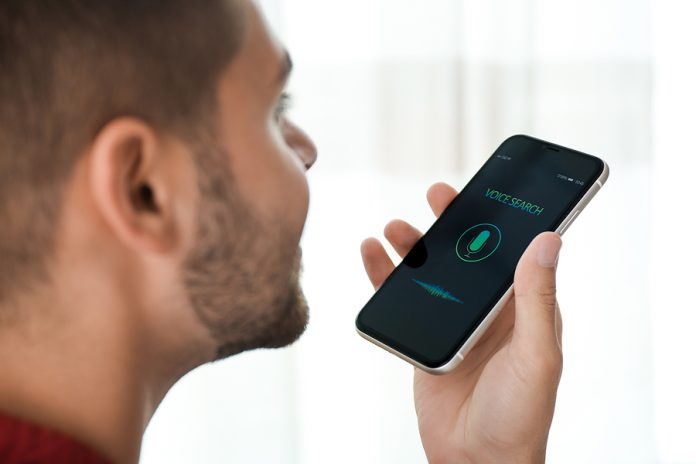The rise of voice-controlled interiors is one of the most significant technological advancements in the field of home automation. With the integration of artificial intelligence (AI) technology and natural language processing (NLP), the home automation industry has undergone a transformation. The Internet of Things (IoT) has enabled the creation of smart homes, where home devices, appliances, lighting, heating and cooling, security, entertainment, and energy management systems can be controlled through voice commands. This trend has not only made home automation more convenient but also more accessible to a wider range of people.
In this article, we will take a closer look at the basics of home automation technology and the importance of voice control in the development of smart homes. We will also examine the current state of voice-controlled interiors and its future potential, as well as the impact it will have on the home automation industry.
The rise of voice-controlled interiors is a testament to the incredible potential of technology to revolutionize the way we live our lives. With the continued development of AI and NLP, the future of home automation looks bright, and the possibilities are endless.
Future of Home Interiors
The purpose of this article is to provide an in-depth analysis of the rise of voice-controlled interiors and its impact on the future of home automation. With the advancement of wireless technology and voice recognition, the home automation industry has seen a significant increase in the development of home voice-activated devices and systems. The integration of voice control into home automation has not only improved home security and entertainment but also home monitoring, networking, and energy management.
Part 1: The Basics of Voice-Controlled Home Automation
What is voice-controlled home automation?
Voice-controlled home automation refers to the integration of voice recognition technology into various home devices, appliances, lighting, heating and cooling, security, entertainment, and energy management systems. This technology allows for the control of these systems through voice commands, making home automation more convenient and accessible.
The basic principle behind voice control in smart home automation is the integration of artificial intelligence (AI) technology and natural language processing (NLP). These technologies enable the recognition of spoken commands and the execution of corresponding actions within the home automation system.
There are numerous examples of popular voice-controlled home automation products currently available in the market. These include virtual assistants such as Amazon’s Alexa and Google’s Assistant, as well as smart home devices such as the Nest Thermostat, the Philips Hue lighting system, and the August Smart Lock. These products have proven to be effective in increasing the convenience and accessibility of home automation.
Voice-controlled home automation is a rapidly growing trend in the home automation industry. With the integration of AI and NLP technology, this trend has the potential to revolutionize the way we control our homes, making it more convenient and accessible than ever before.
Part 2: The Benefits of Voice-Controlled Home Automation
The integration of voice control technology into home automation has brought numerous benefits to homeowners. One of the primary benefits is convenience. With voice control, homeowners can control various systems within their smart homes without the need for physical interaction, making home automation more accessible and user-friendly.
In addition to convenience, voice control also provides benefits in terms of safety. For example, in the event of an emergency, homeowners can quickly and easily control their home security systems through voice commands, providing an extra layer of protection.
Another benefit of voice control in home automation is accessibility. This technology can be particularly useful for individuals with disabilities or limited mobility, as it enables them to control various systems within their homes with ease.
Not only does voice control provide benefits for homeowners, but it also has the potential to benefit the environment through increased energy efficiency. By allowing for the automated control of heating and cooling systems, lighting, and appliances, voice control can help reduce energy consumption and lower a home’s carbon footprint.
The integration of voice control technology into home automation provides numerous benefits for homeowners, including convenience, safety, accessibility, and increased energy efficiency. With the continued development of AI and NLP technology, it is likely that the benefits of voice control will only continue to grow in the future.
Part 3: The Challenges and Limitations of Voice-Controlled Home Automation
While voice-controlled home automation has many benefits, it also presents a number of challenges and limitations. One of the most significant challenges is privacy and security. As with any technology that collects and stores personal information, there is a risk of data breaches and unauthorized access to sensitive information.
Another challenge of voice control in home automation is the potential for technical limitations and compatibility issues. For example, compatibility issues between different systems and devices can make it difficult for homeowners to fully integrate voice control into their home automation systems. Additionally, technical limitations such as limited voice recognition accuracy and slow response times can negatively impact the user experience.
While voice-controlled home automation has many benefits, it also presents a number of challenges and limitations. These include privacy and security concerns, as well as technical limitations and compatibility issues. It is important for homeowners to consider these factors when evaluating the potential benefits and drawbacks of voice control in their home automation systems.
Part 4: The future of voice-controlled home automation
The future of voice-controlled home automation looks bright, with the continued development of artificial intelligence (AI) and natural language processing (NLP) technology. As these technologies continue to advance, it is likely that the benefits of voice control will only continue to grow, making home automation more convenient, accessible, and user-friendly than ever before.
Integration of Artificial Intelligence (AI):
The ongoing development of AI is set to play a crucial role in the future of voice-controlled home automation. With improvements in natural language processing and machine learning algorithms, virtual assistants will be better equipped to understand context, intent, and emotions, leading to more intelligent and responsive interactions. Furthermore, AI-driven systems will be capable of learning and adapting to users’ preferences and routines, creating highly personalized and intuitive living environments.
Multi-modal Interfaces:
The future of home automation is expected to encompass not just voice control but also other modalities of interaction, such as gesture recognition. This multi-modal approach will allow users to choose the most convenient and effective method of exchange based on their specific needs and preferences, resulting in a more versatile and user-friendly experience.
Enhanced Security and Privacy:
As voice-controlled home automation becomes increasingly popular, privacy and security concerns will remain a paramount issue. Future developments in this field will likely address these concerns by implementing advanced encryption technologies, robust security protocols, and transparent data handling practices. This will ensure that users can enjoy the benefits of voice-controlled home automation without compromising their privacy and security.
Interoperability and Standardization:
The future of voice-controlled home automation will likely emphasize interoperability and standardization among devices and platforms. This will facilitate seamless communication and integration of various smart devices within a home automation ecosystem, regardless of the brand or manufacturer. In addition, such standardization will not only enhance user experience but also promote innovation and competition within the industry.
Expansion of Voice Control Applications:
As technology continues to mature, we can expect voice control to be integrated into an even broader range of home applications and devices. From lighting and climate control to entertainment systems and household appliances, the possibilities for voice-controlled automation are virtually limitless, paving the way for a truly interconnected and intelligent living experience.
FAQs: The Rise of Voice-Controlled Interiors: A Look into the Future
How does voice control work in home automation?
- The basic principle behind voice control in home automation is the integration of artificial intelligence (AI) technology and natural language processing (NLP). These technologies enable the recognition of spoken commands and the execution of corresponding actions within the home automation system.
Is voice control technology reliable?
- Voice control technology is becoming increasingly reliable, and the accuracy of virtual assistants like Alexa and Google Assistant is improving all the time. However, as with any technology, there may be occasional miscommunications or technical issues.
How much does a voice-controlled home automation system cost?
- The cost of a voice-controlled home automation system can vary greatly depending on the specific components and features. A basic voice-activated device can cost anywhere from $50 to $200, while a more advanced system with multiple connected devices and systems can cost several hundred dollars or more.
Are there any voice-controlled home automation systems designed for individuals with disabilities or limited mobility?
- Yes, many voice-controlled home automation systems are designed with accessibility in mind. These systems are designed to be easy to use and provide convenient control of various home devices and systems through voice commands, making home automation more accessible for individuals with disabilities or limited mobility.
Conclusion/Wrapping Up
In conclusion, the rise of voice-controlled home automation represents a significant shift in how we interact with and control our homes. The integration of voice recognition technology and artificial intelligence (AI) into home devices and systems has made home automation more convenient and accessible, providing homeowners with increased control and convenience.
The benefits of voice-controlled home automation are clear, including increased convenience, improved safety, enhanced accessibility, and increased energy efficiency. However, there are also challenges and limitations to consider, such as privacy and security concerns and technical limitations and compatibility issues.
Despite these challenges, the future of voice-controlled home automation looks promising, with the continued development of AI and natural language processing (NLP) technology. As these technologies continue to advance, it is likely that the benefits of voice control will only continue to grow, making home automation more convenient, accessible, and user-friendly than ever before.
Finally, the rise of voice-controlled home automation represents an exciting time for the future of home automation and highlights the continued advancements in technology that are transforming the way we live and interact with our homes.

Cameron Dickerson is a seasoned journalist with nearly 10 years experience. While studying journalism at the University of Missouri, Cameron found a passion for finding engaging stories. As a contributor to Kev’s Best, Cameron mostly covers state and national developments.

